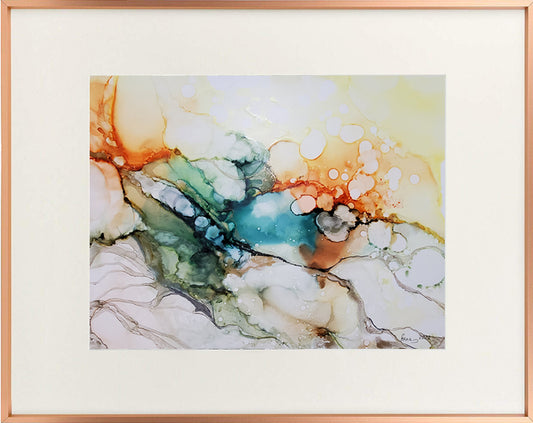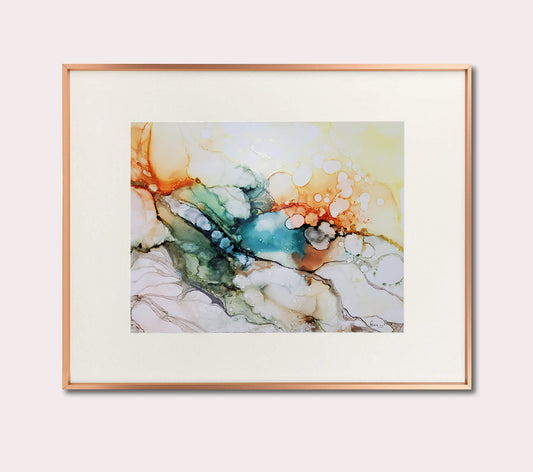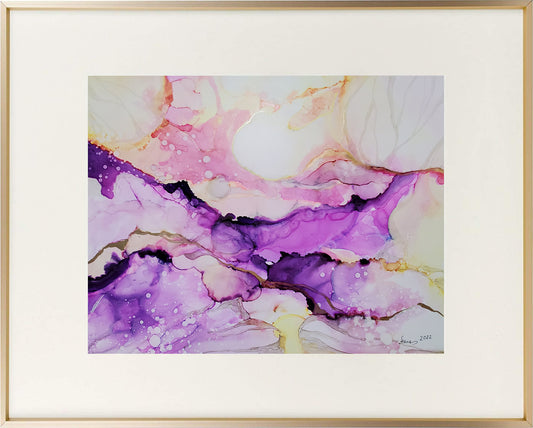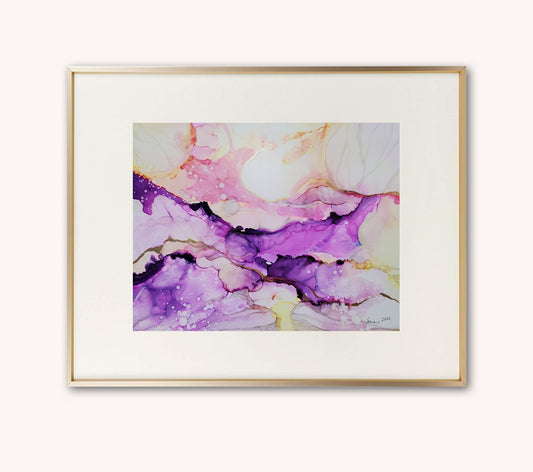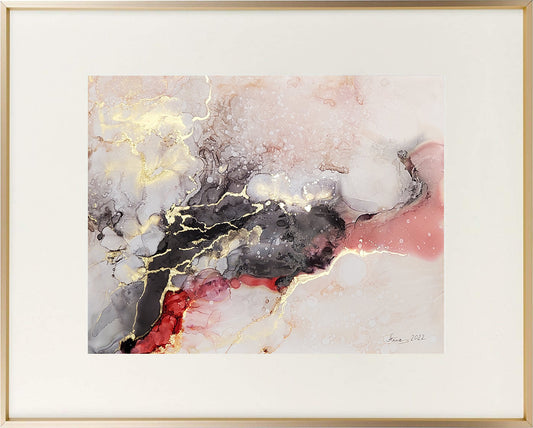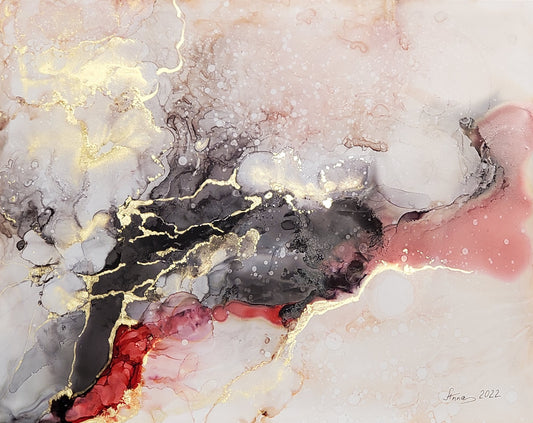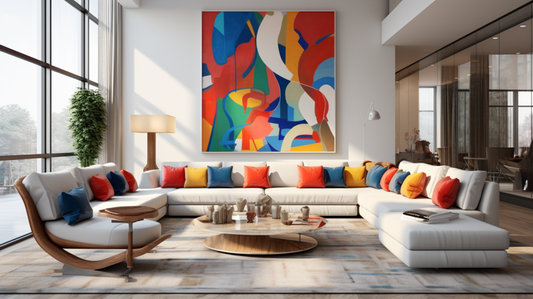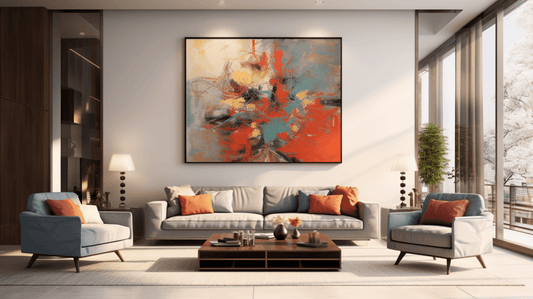
Symbolic abstract art is a captivating genre of artistic expression that has the power to evoke deep emotions and convey profound meaning. At its core, symbolic abstract art relies heavily on the use of shapes and forms to communicate ideas, emotions, and concepts. In this article, we will explore the multifaceted role of shapes and forms in symbolic abstract art, delving into their significance, their evolution over time, and the impact they have on viewers. Through an array of examples from renowned artists, we will unravel the intricate language of shapes and forms in symbolic abstract art and demonstrate how they serve as powerful tools for artists to communicate their messages.
Shapes, as geometric entities, are abstract by nature. They are often defined by their outlines, edges, and the relationships between their various components. In symbolic abstract art, the choice of shapes is deliberate and carries symbolic weight. For example, a circle, with its absence of sharp angles and infinite, cyclical nature, can symbolize unity, eternity, and perfection. Wassily Kandinsky, a pioneer in the realm of abstract art, was a master of using geometric shapes to convey emotions and ideas. In his iconic painting "Composition VIII" (1923), Kandinsky employs circles, triangles, and other shapes in a complex interplay, inviting viewers to explore the depths of their symbolic interpretations.

Forms, on the other hand, are three-dimensional representations of shapes, adding depth and volume to the composition. In symbolic abstract art, forms can be as simple as a sphere or as complex as a distorted human figure. They enable artists to convey not only the visual aspects of the subject but also its tactile and emotional qualities. The sculptures of Henry Moore, such as "Reclining Figure" (1951), exemplify the use of abstract forms to communicate the essence of the human figure. Moore's sculptures, with their smooth, organic shapes, evoke a sense of serenity and the eternal connection between the human form and the natural world.

The evolution of shapes and forms in symbolic abstract art is a testament to the changing philosophies and societal contexts that shape artistic movements. As abstract art itself evolved over the 20th century, so did the role of shapes and forms within the genre.
In the early 20th century, artists such as Kazimir Malevich and Piet Mondrian were at the forefront of the geometric abstraction movement. Their works, like Malevich's "Black Square" (1915) and Mondrian's "Composition with Red, Blue, and Yellow" (1930), reduced art to its most basic elements, employing simple shapes and primary colors. The stark geometric forms in these artworks aimed to distill art to its purest essence, emphasizing the spiritual and utopian ideals of the era.

However, as the 20th century progressed, abstract art began to embrace a more organic and fluid approach to shapes and forms. Artists like Joan Miró and Jean Arp explored biomorphic abstraction, introducing curvilinear and irregular forms that suggested the organic and the intuitive. In Miró's "The Birth of the World" (1925), one can see the influence of Surrealism and the use of irregular, amoebic shapes to evoke the primal and the subconscious.
The mid-20th century witnessed the rise of Abstract Expressionism, where artists like Jackson Pollock and Willem de Kooning used energetic and gestural forms to convey emotions and states of mind. Pollock's "Autumn Rhythm" (1950) is a prime example of this approach, as the dynamic and chaotic forms express the artist's inner turmoil and the raw energy of the creative process.

In the latter half of the 20th century, post-modernism and conceptual art pushed the boundaries of shape and form in symbolic abstract art even further. Artists like Sol LeWitt and Dan Flavin employed minimalistic shapes and the use of light as a medium, challenging traditional notions of art. LeWitt's "Wall Drawing #652" (1990) consists of a grid of straight lines and geometric shapes, emphasizing the conceptual aspect of art and the idea behind the work rather than its physical execution.

Contemporary artists continue to experiment with shapes and forms in symbolic abstract art. In the digital age, artists can manipulate and transform shapes with unprecedented ease, creating intricate and visually captivating compositions. The works of computer-generated art by Casey Reas, such as "Software Structures" (2004), explore the dynamic possibilities of abstract forms in the digital realm, blurring the line between art and technology.

The power of shapes and forms in symbolic abstract art lies in their ability to elicit emotional and intellectual responses from viewers. The interpretive nature of abstract art invites a wide range of reactions, as individuals bring their own experiences and perspectives to the artwork. Shapes and forms play a crucial role in shaping these reactions.
The use of geometric shapes in abstract art can create a sense of order and stability. When viewers encounter paintings dominated by rectangles, squares, and triangles, they may experience a feeling of balance and rationality. For instance, the works of the Dutch artist Piet Mondrian, known for his meticulous use of primary colors and straight lines, often induce a sense of harmony and simplicity. In "Composition with Red, Blue, and Yellow" (1930), the careful arrangement of geometric forms elicits a sense of equilibrium and visual satisfaction.
Conversely, irregular and organic forms in abstract art can evoke feelings of unpredictability and emotional depth. The freeform shapes in Joan Miró's "The Birth of the World" (1925) prompt viewers to explore the subconscious and the primal aspects of the human psyche. The irregularity of the forms invites a sense of mystery and invites viewers to interpret the artwork on a deeply personal level.
Gestural and expressive forms in Abstract Expressionism can elicit powerful emotional responses. The dynamic and seemingly spontaneous forms in Jackson Pollock's "Autumn Rhythm" (1950) engage viewers with a sense of energy and movement. Viewers may feel the rush of creativity and the intensity of the artist's process, experiencing a visceral connection to the artwork.
Minimalist and conceptual art, with their focus on simplicity and intellectual engagement, often prompt viewers to consider the underlying ideas and concepts represented by the shapes and forms. Sol LeWitt's "Wall Drawing #652" (1990) challenges viewers to contemplate the conceptual aspect of art, urging them to consider the relationship between the idea and its execution. The minimalistic forms in the artwork encourage a contemplative and cerebral response.
In the digital age, the use of shapes and forms in symbolic abstract art takes on new dimensions. Artists like Casey Reas employ intricate digital compositions that can be experienced as both visually captivating and intellectually stimulating. The dynamic and ever-changing nature of digital art invites viewers to engage with the artwork on a technological and aesthetic level, provoking thoughts about the role of technology in contemporary art.
Shapes and forms in symbolic abstract art are not arbitrary; they are chosen with intention and purpose. Artists often employ shapes and forms to convey specific meanings or ideas, and viewers are encouraged to decipher these visual languages.
For instance, the use of the circle can symbolize unity and eternity, as seen in Wassily Kandinsky's "Composition VIII" (1923). Kandinsky's intricate arrangement of circles and triangles creates a sense of cosmic harmony, inviting viewers to contemplate the interconnectedness of all things.
Squares and rectangles, with their straight lines and right angles, often symbolize stability and order. In the work of Piet Mondrian, such as "Composition with Red, Blue, and Yellow" (1930), these shapes represent the rational and the universal, suggesting a sense of balance and simplicity in a complex world.
Irregular and amoebic shapes can evoke the primal and the subconscious. Joan Miró's "The Birth of the World" (1925) uses irregular forms to tap into the raw, unfiltered aspects of human experience. The organic shapes invite viewers to explore the depths of their own emotions and memories.
The gestural forms of Abstract Expressionism, as exemplified in Jackson Pollock's "Autumn Rhythm" (1950), communicate the energy and spontaneity of the creative process. The dynamic and fluid shapes in Pollock's work reflect the chaos and intensity of artistic inspiration.
Minimalistic shapes in the art of Sol LeWitt, such as "Wall Drawing #652" (1990), challenge viewers to consider the relationship between concept and execution. The use of simple geometric forms emphasizes the intellectual aspect of art, encouraging viewers to contemplate the underlying ideas and the role of the artist.
Digital art by Casey Reas, like "Software Structures" (2004), employs intricate shapes and forms to explore the intersection of art and technology. The use of digital forms allows viewers to engage with the artwork on multiple levels, from the aesthetic to the technological.
Shapes and forms in symbolic abstract art are the silent but powerful messengers of artists' ideas, emotions, and concepts. From the early pioneers of geometric abstraction to the digital innovators of the contemporary art world, the language of shapes and forms has evolved and expanded, offering endless possibilities for artistic expression.
As viewers engage with symbolic abstract art, they are invited to interpret and decode the visual language of shapes and forms. The emotions and ideas conveyed through these abstract elements are as diverse and multifaceted as the human experience itself. Whether it is the harmony of a circle, the chaos of gestural forms, or the intellectual depth of minimalistic shapes, symbolic abstract art continues to challenge and inspire, inviting us to explore the boundless realms of human creativity and expression. Shapes and forms are the bridge that connects the artist's inner world with the viewer's perception, and in that connection lies the enduring power of symbolic abstract art.
Intrigued by the fascinating world of abstract art? Your artistic journey doesn't have to end here. Explore a mesmerizing collection of captivating and modern abstract artworks by visiting our Abstract Art Collection and Shop. Our gallery is a treasure trove of creativity, where you can not only see but also acquire unique pieces that resonate with your aesthetic sensibilities. Dive into a realm of imagination, emotion, and innovation as you discover the transformative power of abstract art. Don't miss the opportunity to enrich your surroundings with these thought-provoking creations. Start your exploration now and let the art on this page inspire your soul.

